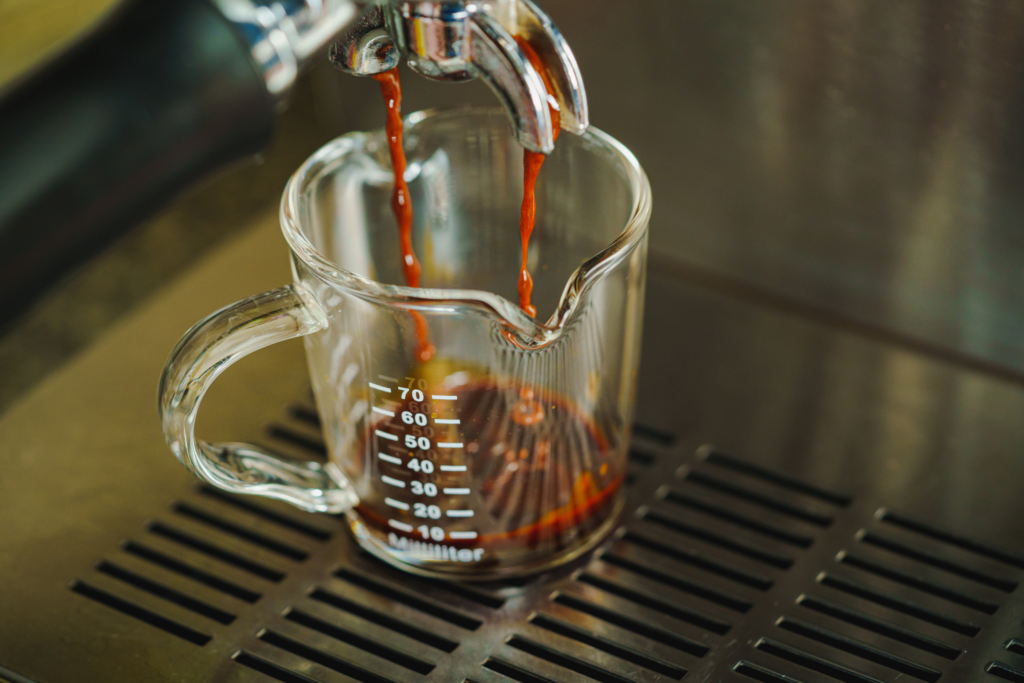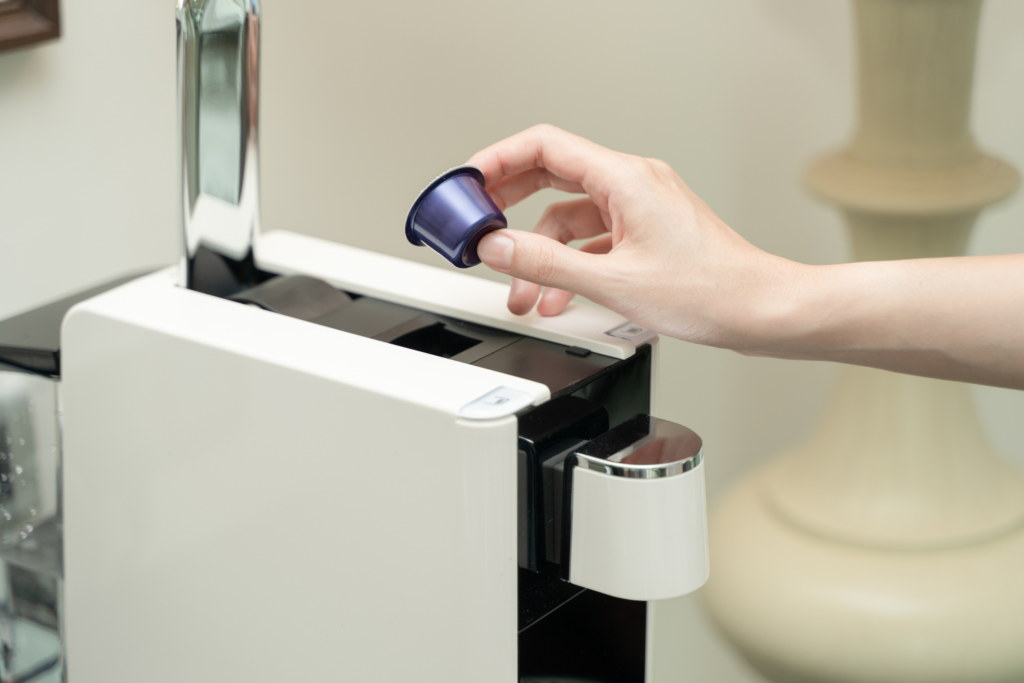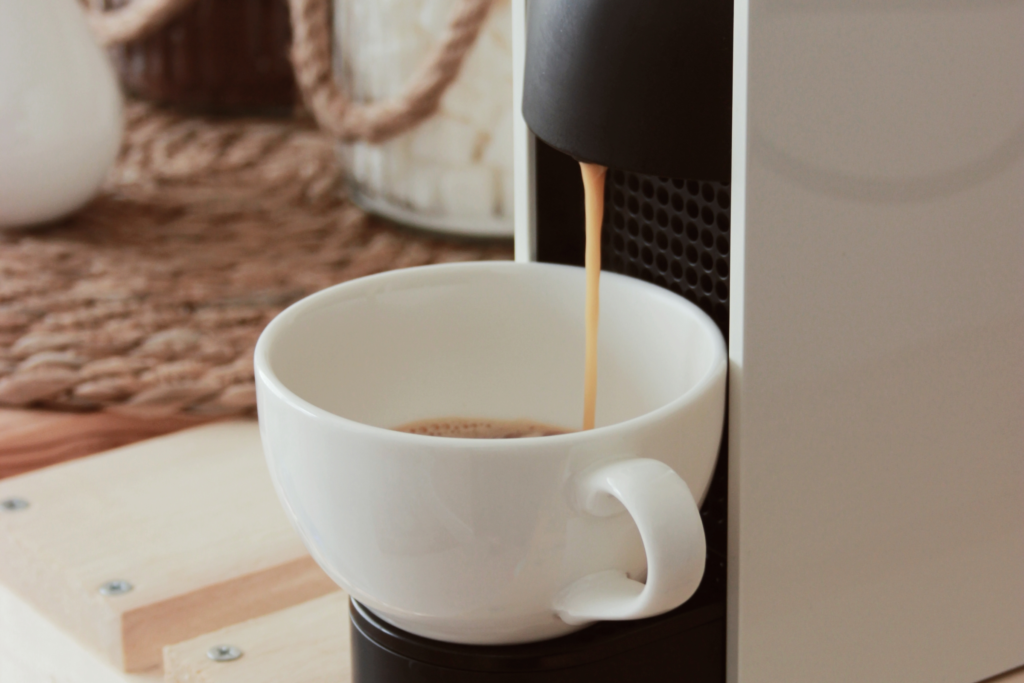Keurig Coffee Maker Descale Not Working (Or the Light Won’t Turn Off)
As a Keurig coffee maker user, I know how essential it is to descale regularly. Descaling removes mineral buildup that happens naturally over time due to minerals in the water, ensuring a longer lifespan and tastier coffee.
However, many people don’t understand how to descale a Keurig machine or encounter problems while they are trying to do it. Or, maybe, the descaling light just won’t turn off, leaving us feeling frustrated and wondering what went wrong.
In this article, I’ll share some helpful tips and solutions for the Keurig coffee maker descaling process and address the most common issues.
Read on to learn various approaches to tackle this problem and get your Keurig back in tip-top shape!
Understanding Keurig coffee maker descaling
First, let’s explain the descaling process – what is the purpose?
Coffee maker descaling is the process of removing mineral buildup, such as limescale, from the coffee maker. Descaling helps to keep the coffee maker functioning properly and producing good quality coffee.
It is recommended to descale a coffee maker regularly, and the frequency varies depending on the type of coffee maker and the hardness of the water used. Descaling can be done using a variety of methods, including using household products like vinegar or citric acid, or using commercial descaling solutions
When it comes to maintaining my Keurig coffee maker, descaling is a crucial process that helps keep my machine functioning properly. I usually descale my Keurig every 3 to 6 months to prevent limescale buildup and ensure my coffee consistently has a high-quality flavor.
The Keurig descaling Light and its importance
The descale light on my Keurig usually turns on when there is clogging in the machine, disturbing the flow of water through the appliance. After 250 brews or every three months, the descale light will still appear as a reminder for regular cleaning and to maintain my Keurig’s health.
It’s essential to address the descale light promptly to avoid potential damage to the machine and to enjoy the best tasting coffee.
How to descale a Keurig coffee maker – a basic step-by-step guide
To descale my machine, I follow these steps:
- Empty the water reservoir and remove any filters.
- Fill the reservoir with a mixture of water and Keurig descaling solution.
- Activate descale mode by powering off the brewer and holding down the 8oz and 12oz buttons together for 3 seconds.
- Place a large mug or coffee cup (at least 12 ounces) on the drip tray.
- Press the Brew button and wait for the liquid to flow into the mug.
- Discard the mug’s contents and repeat the brewing process until the reservoir is empty.
- Rinse the reservoir and refill it with fresh water.
- Brew cups of hot water until the reservoir is empty again to remove any remaining descaling solution.
- Reset the Keurig machine to turn off the descaling light

How to reset a Keurig coffee maker
To reset your Keurig after descaling, first make sure that the machine has completely cooled down. Unplug it from the wall and wait at least 30 minutes.
Once it’s cooled down, press and hold the power button for five seconds. Release it and then plug the machine back in. Press the power button again to turn it on
Should you use the Keurig descaling solution?
When descaling my Keurig coffee maker, I prefer to use the official Keurig descaling solution because it is specifically designed for my machine and effectively removes limescale buildup. The solution is easy to use, simply mix it with water and follow the descaling process mentioned earlier.
If I can’t find the official solution, I use alternatives like white vinegar, but I make sure to thoroughly rinse the machine after the process so no residue or odor remains.
Alternative Descaling Solutions for your Keurig
If you don’t have access to the official Keurig descaling solution, there are a few other ways that you can get the job done:
- Vinegar
- Citric acid
- Commercial descaling products
Perform a Vinegar Descale Process
If your Keurig descale light is still on after trying the previous steps, it’s time to perform a vinegar descale process. This process helps to loosen and lift the built-up limescale from your brewer. Here’s how I perform a vinegar descale process:
- Fill the water reservoir halfway with distilled white vinegar
- Add an equal amount of water to the reservoir, creating a 1:1 vinegar and water solution
- Begin the descaling process by running the solution through the machine without a pod
- Let the solution sit in the coffee maker for a few hours
- Afterward, thoroughly rinse the machine by running clean water through it several times
This vinegar descale process should help to clear any remaining buildup in your coffee maker and, hopefully, turn off the descale light.
Citric Acid Descale
Citric acid is a natural option for descaling your Keurig coffee maker. It can effectively remove mineral deposits while being gentle on the machine. Here’s a step-by-step guide on using citric acid for descaling:
- Mix 1-2 tablespoons of citric acid with 4 cups of water.
- Empty your Keurig’s water reservoir and fill it with the citric acid solution.
- Place a mug or measuring jug on the cup holder to catch the liquid as it pours out.
- Run a brew cycle (without inserting a K-cup) to start the descaling process.
- Continue running brew cycles until the water reservoir is empty.
- Refill the reservoir with fresh water and run at least 2-3 more brew cycles to flush out any remaining citric acid residue.
Commercial Descaling Products
There are commercial descaling products available on the market specifically designed for your Keurig coffee maker, such as the Keurig descaling solution. When choosing a commercial descaling product, keep these considerations in mind:
- Ensure the product is compatible with your specific Keurig model.
- Read and follow the product’s instructions carefully.
- Remember to rinse the machine thoroughly after descaling to remove any product residue.
Using alternative descaling solutions like citric acid or commercial products can help get your Keurig coffee maker back to running properly and reset that pesky descale light. With proper maintenance and care, your Keurig will provide you with numerous delicious cups of coffee.

Why the descale light won’t turn off on a Keurig coffee maker
One of the most common and frustrating issues for Keurig coffee machine owners is the dreaded descaling light that won’t turn off, even after descaling!
If the light stays on, there is always a reason.
ypically, the descale light on a Keurig will stay on because of:
- Scaling or calcium buildup
- Sensor issues
- Water flow problems
Scaling and calcium buildup
One common issue I’ve discovered with Keurig coffee makers is the accumulation of scale and calcium buildup, which can cause the descale light to stay on. Hard water is often the main culprit, as it contains high levels of minerals that can clog the machine over time.
To avoid this issue, I recommend:
- Using filtered water to reduce mineral content
- Regularly descaling the coffee maker using a descaling solution, vinegar, or citric acid
Sensor issues
Sometimes, the descale light on my Keurig stays on due to sensor problems, even after descaling. After some research, I’ve learned that this can be caused by debris or buildup affecting the sensor’s ability to accurately detect scaling.
To tackle this issue, try:
- Keeping the K-cup holder clean and free of debris
- Regularly cleaning the exit needle with a safety pin to avoid clogging
- Repeating the descaling process, increasing the concentration of the solution if necessary
Water flow problems
Lastly, water flow problems can also cause the descale light to remain on. When my Keurig experiences limited water flow, it often indicates a clog caused by scaling or debris.
In order to fix this issue, I suggest:
- Ensuring there are no mineral deposits in the water reservoir and that it is clean
- Running multiple brew cycles with just water to flush out any remaining debris
- Inspecting the water lines for blockages and cleaning them as needed
By addressing scaling and calcium buildup, sensor issues, and water flow problems, I’ve managed to drastically reduce the occurrences of the descale light staying on in my Keurig coffee maker.
Preventative measures and maintenance for your Keurig
In addition to regular descaling, it pays to invest some time and effort into other general maintenance best practices that will keep your coffee maker running smoothly for longer.
Here are the most important things to consider:
- Clean the exit and entrance needles
- Check and replace the water filter
- Regular cleaning
- Using filtered water
- Refillable K-Cups
- Max fill line awareness

Clean the exit and entrance needles
Next, I suggest cleaning the exit and entrance needles to remove any debris or coffee grounds. This can be done by wiping down the puncture needles with a cloth or using a safety pin to remove any accumulated grounds. It’s crucial to keep these areas clean since any clogs here may cause the descale light to stay on.
Check and replace the water filter
It’s essential to ensure that the water filter in your Keurig coffee maker is functioning correctly. If the filter is old or clogged, it may contribute to the descale light remaining on. Here’s what I do to check and replace the water filter in my machine:
- Remove the filter from the water reservoir
- Look for signs of damage or buildup
- Replace the filter if it appears clogged or overly discolored
Remember that replacing the water filter regularly will help maintain your coffee maker’s performance and prevent the descale light from staying on longer than necessary.
Regular cleaning
I find it essential to clean my Keurig regularly to keep it running smoothly and prevent scale buildup. I usually perform a quick cleaning once a week by wiping the exterior, drip tray, and pod holder with a damp cloth. Additionally, cleaning the needle with a paperclip can help prevent clogs from coffee grounds.
Every three months, I also descale my machine using a descaling solution or a mix of water and white vinegar. I make sure to run several cycles with plain water afterward to rinse out any remaining solution.
Using filtered water
To minimize mineral buildup in my Keurig, I always use filtered water instead of tap water. This helps reduce the frequency of descaling, prolong the life of my machine, and improve the taste of my coffee.
Refillable K-Cups
One way I like to reduce waste and save money is by using refillable K-Cups. These reusable pods can be filled with my favorite coffee grounds, allowing me to enjoy a more sustainable and personalized brewing experience. Just make sure to clean them thoroughly after each use to avoid coffee residue from affecting the next brew.
Max fill line awareness
As a Keurig owner, I need to be mindful of the water reservoir’s max fill line. Overfilling can cause issues like water leakage and inconsistent brewing. By always filling the reservoir up to the recommended level, I ensure my Keurig operates efficiently and lasts longer.
Addressing Issues with different Keurig models
While all Kuerig coffee maker models are fairly similar, there are some special caveats to be aware of depending on the specific model that you have.
Let’s take a look at these, one by one.
Keurig Classic
In my experience using the Keurig Classic, if the descale light won’t turn off, I would first try re-running the descaling cycle. Sometimes, it takes more than one cycle to clean it properly. Another option is to use a vinegar or citric acid solution to descale the coffee maker. Make sure to let it sit for a few hours before rinsing. I also make sure to clean the exit needle with a safety pin to ensure there’s no clogging.
Keurig Mini Plus
When I faced descaling issues with my Keurig Mini Plus, I made sure to place a large mug on the drip tray and remove any pods from the machine. To activate its descale mode, I would power off the brewer and hold down the 8oz and 12oz buttons together for 3 seconds. If it still doesn’t work, I would consider repeating the process, checking for water leakage and ensuring the K-cup holder and needles were clean.
Keurig Duo
For the Keurig Duo, I found it essential to follow the manufacturer’s recommended descaling process. It’s important to remember that using incorrect capsule sizes or clogged needles might cause water leakage, so I make sure to clean them regularly. If the descale light persists, I would try using the vinegar or citric acid solution to descale more effectively.
Keurig Supreme
My Keurig Supreme has been prone to similar descaling issues. I would ensure that there are no stuck coffee grounds or excess clogging by cleaning the needles and K-cup holder. If the descale light remains on, I would also consider using a descaling solution that doesn’t contain soapy ingredients or other chemicals, as they can sometimes cause more issues.
Keurig Slim
In my experience with the Keurig Slim, I found it vital to follow the descaling process as suggested by the manufacturer. If the descale light doesn’t turn off, I would check for clogging, clean the needles and K-cup holder, and consider using a vinegar or citric acid solution. If these steps don’t solve the issue, I might try contacting Keurig customer support for additional help.
Escalating Issues and Contacting Keurig Support
Now, if none of these troubleshooting steps work, and your Keurig descale light is still on, it’s time to contact Keurig Support. They have a team of experts who can offer solutions and, if necessary, guide you through the process of getting your coffee maker repaired or replaced. Make sure to have your model number, serial number, and purchase date handy when you reach out to their customer service.
In conclusion, dealing with a persistent descale light can be challenging, but trying these troubleshooting steps and reaching out to Keurig Support can help put you on the right track. The key is to be patient and persistent in your efforts to maintain your coffee maker’s health and functionality.
Let Us Know How We’re Doing!
Did this expertly prepared resource answer your question?
Do you have another question about home maintenance, home improvement projects, home appliance repair, or something else?
Get more information, send in questions and keep the discussion going by contacting the I’ll Just Fix It Myself company customer service team at at 1-800-928-1490 or Email us at [email protected]
